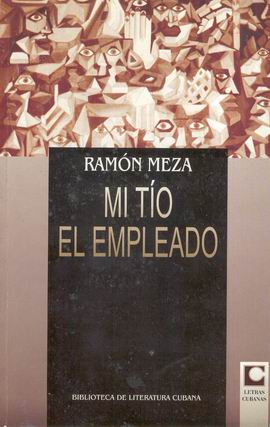3.2.7.1 “Don Aniceto the shopkeeper” and “My uncle the employee”, by Ramón Meza (1861 – 1911)

“Don Aniceto el tendero” (1889) and “Mi tío el vendedor” (My Uncle the Employee) (1887) are respectively the third and last of Meza’s narrative pieces. They present some thematic affinities and follow the same stylistic line, although this is not a given or static part of the author’s literary career. The inversion in chronological order is due to the fact that the novel “Don Aniceto el tendero” was written first, although it was published two years after Meza’s masterpiece was published.
The character of Aniceto embodies the eternal ambition of men; not as an abstract human type, but rather as a contextualized figure in a Cuba that was opening up to capitalism. In fact, the word “capital” is repeated in various passages, a constant in the character’s behavior, which he considers “the key to life.”
Aniceto’s shop is christened “Commercial Morality.” He and Salustiano are peninsular citizens who aspire to make a fortune; however, they prioritize this goal over multiple moral considerations. The author skillfully uses symbolic devices to highlight this and other realities, as in the case of the shop’s name sign, whose letters are erased or moved by the wind, indicating the weakness of principles. Even Aniceto sacrifices love by giving his daughter’s hand to Salustiano, always with his mind on potential profits.
“My Uncle the Employee” is Meza’s most popular novel, as well as his masterpiece and one of the most important works of 19th-century Cuba, although it was misunderstood by critics of its time and even later.
The main character, Vicente Cuevas, is an emigrant seeking to make his fortune on the island, similar to Don Aniceto’s initial anchorage. His feelings as he travels around the island are described in an impressionistic manner, emphasizing secondary elements and details that take on symbolic form. The character’s bewilderment, sometimes astounding, translates into a contagious and disconcerting hilarity.
In the second part of the novel, Vicente Cuevas reappears as Count Coveo. His new position allows him to be received differently in the same places, now transformed in his own perception and that of others; however, he cannot exorcise the emptiness, apathy, and loneliness. Meza’s realism, his own gargantuan hilarity, is hurtful as a mirror of society, with all the implications of class division.
The spiritual impossibility of love is expressed in the frivolity of Count Coveo’s relationship with Clotilde, now in an artificial atmosphere where nothing is real but a semblance or reminiscence of what once had substance, such as his former love for Aurora, which seems revived, but the character is a willing prisoner of the fallacy of luxury and ostentation. Both works recreate, through a broad range of narrative devices, social climbing and its meaninglessness.








